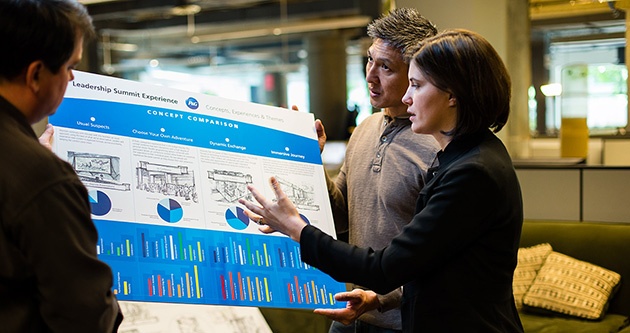Change is not a four-letter word. But it may as well be. No one likes to change, and those who say they do, as in, “I’m looking for some change in my life,” or “we really need a change here,” are really running to or away from something. Real change – a purpose-driven goal of improvement requiring an investment in time, resources and money – is difficult. That being said, one would think that after so many years of organizational change, transformation, shift, entering-a-new-era, etc., that there would be a recipe for success – a formula that would make all change initiatives as easy as pie. Not so much.
.
The challenge is that all change involves humans. And we humans are, as we should be, different. We like things our way; we are motivated by different means; we see and understand and define things differently. So there is no one, simple recipe for change; in fact, there are dozens. The only way to know if you’ve chosen the right formula is to implement it and see if it works. No bank would ever back a chef that ran his or her restaurant that way. Yet each month, hundreds of organizations embark on change initiatives, large and small, with the intent of driving significant change; basing the entire effort on the hope that a particular methodology – a recipe – MIGHT be the right one for them.
Instead of the focusing on the recipe, why not focus on the ingredients?
To make change work, no matter what recipe you choose, empathy is your secret ingredient. The problem is, like yeast for the bread, empathy can make or break your change initiative, and most people don’t know HOW to properly use it, WHAT amount of it is needed, or WHEN different types are needed.
Empathy takes time to cultivate. You must reach into the organization and evaluate the nuanced differences of all the people, groups, regions, etc., and ask questions. Lots of questions. Understand who these folks are, what their take on the impending change might be; how they’d like to see it unfold; how it best suits them; and what tools they might need.
But wait, there’s more: you have to help them see the change as well. That’s what makes your change initiative – your recipe – work. Empathy is only empathetic if you actually do what the employees have told you they need done, and then communicate in a way that resonates with them. Show them how the change comes to life. Visualize the story of change and the vision of success. Educate and message the change in open forums that align multiple stakeholders and give everyone the opportunity to help contribute to the recipe.
